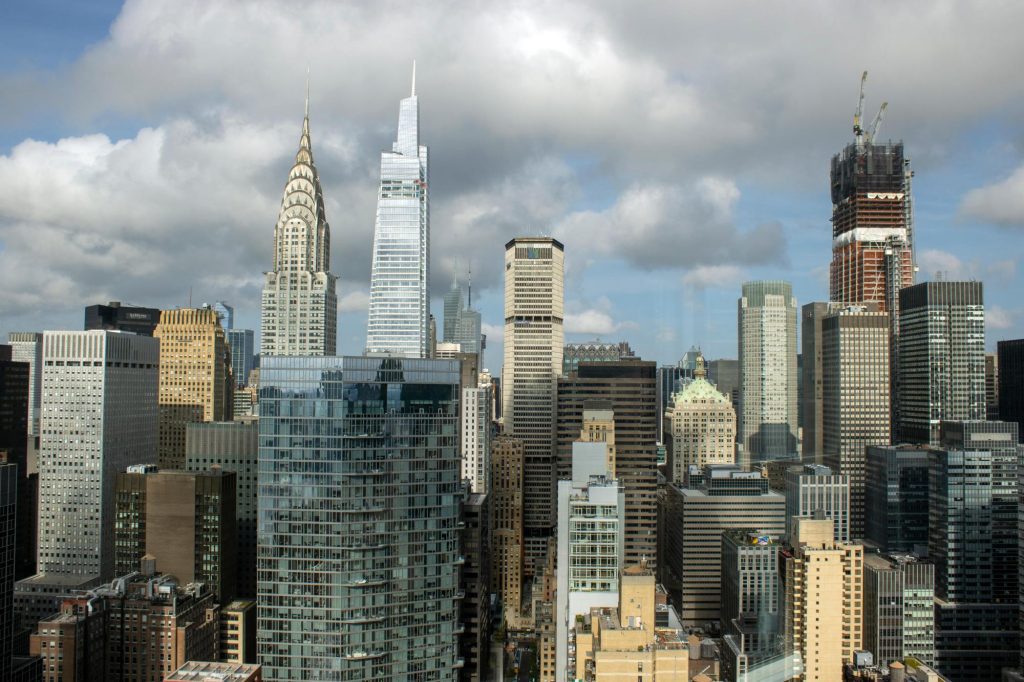By JENNIFER PELTZ and MIKE CATALINI (Associated Press)
A quake jolted the heavily populated New York City metropolitan area on Friday morning, with residents in the Northeast reporting shaking in an area not used to it.
The U.S. Geological Survey recorded a 4.8-magnitude quake at 10:23 a.m., centered near Whitehouse Station, New Jersey, about 45 miles west of New York City and 50 miles north of Philadelphia. The agency’s data suggested that the quake may have been felt by over 42 million people.
People from Baltimore to the Massachusetts-New Hampshire border reported feeling the ground shake. While there were no immediate reports of serious damage, officials were inspecting bridges and other major infrastructure, Amtrak slowed trains throughout the busy Northeast Corridor, and a Philadelphia-area commuter rail line halted service as a precaution.
“Pretty weird and scary,” said Shawn Clark after sensing the quake in his 26th-floor midtown Manhattan office. Clark, an attorney, initially feared an explosion or construction accident.
His colleague Finn Dusenbery feared the ceiling or even the building would collapse.
“I wanted to get out of the building when I felt that,” Dusenbery said.
In midtown Manhattan, traffic became louder as drivers honked horns on trembling streets. Some Brooklyn residents heard a boom and felt their building shaking. Cellphone networks were overwhelmed for a while as people tried to reach loved ones and understand what was happening.
At U.N. headquarters in New York, the trembling interrupted the chief executive of Save The Children, Janti Soeripto, as she briefed an emergency Security Council session on the threat of famine in Gaza and the Israeli drone strikes that killed aid workers there.
“Is it an earthquake?” Soeripto wondered aloud, then asked if it was all right to go ahead. She did, but soon diplomats’ phones blared with earthquake alerts.
In New York City’s Astoria neighborhood, Cassondra Kurtz was giving her 14-year-old Chihuahua, Chiki, a cocoa-butter rubdown for her dry skin. Kurtz was recording the moment on video, as an everyday memory of the dog’s older years, when her apartment started shaking hard enough that a large mirror banged audibly against a wall.
Kurtz assumed at first it was a big truck going by. The video captured her looking around, perplexed. Chiki, however, “was completely unbothered.”
Earthquakes are less frequent on the eastern than western edges of the U.S. because the East Coast is not located on a tectonic plate boundary. The most significant Eastern quakes typically occur along the mid-Atlantic Ridge, which extends through Iceland and the Atlantic Ocean.
Quakes on the East Coast can still have an impact, as its rocks are better than their western counterparts at spreading earthquake energy over long distances.
“If we had the same magnitude quake in California, it probably wouldn’t be felt nearly as far away,” stated USGS geophysicist Paul Caruso.
A 4.8-magnitude earthquake isn’t big enough to cause harm, except for some small effects near the center, the agency said on X.
Quakes with magnitudes close to or above 5 hit near New York City in 1737, 1783, and 1884, according to USGS. And Friday’s event revived memories of the Aug. 23, 2011, quake that shook tens of millions of people from Georgia to Canada. With an epicenter in Virginia, it caused damage to the Washington Monument and shook New Yorkers ahead of the 10th anniversary of the Sept. 11 terror attacks.
With a magnitude of 5.8, it was the most powerful earthquake to hit the East Coast since World War II.
The White House said in a statement on Friday that President Joe Biden had been briefed on the earthquake and was “in touch with federal, state, and local officials as we learn more.”
As of noon, New York City had no signs of “major life safety or infrastructure issues from the earthquake,” Mayor Eric Adams said on X, and added that the city was inspecting critical areas.
New York Gov. Kathy Hochul said on X that the quake was felt throughout the state, but officials had no reports of any life-threatening problems.
Solomon Byron felt it as he sat on a park bench in Manhattan’s East Village.
“I was just like, ‘Where is that vibration coming from?’” Byron remembered. He was especially confused since there were no subways running nearby.
But he didn’t realize there had been an earthquake until he received the alert on his cellphone.
___









